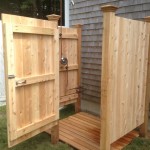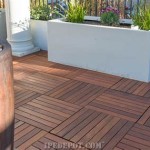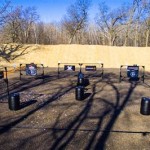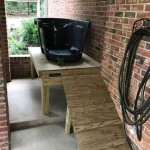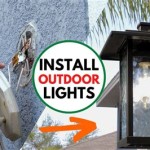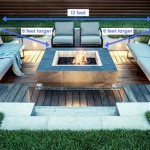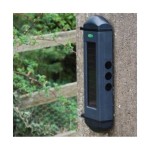Outdoor Fireplace Natural Gas Burners: Selection, Installation, and Safety
Outdoor fireplaces provide an attractive and functional addition to patios, decks, and gardens, offering warmth, ambiance, and a focal point for social gatherings. Natural gas burners are a popular choice for these fireplaces, offering convenience, clean burning, and consistent heat output. Understanding the various aspects of natural gas burners, from selection and installation to safety and maintenance, is crucial for ensuring a successful and enjoyable outdoor fireplace experience.
A natural gas burner comprises several components working in concert to deliver controlled combustion. The primary components include the burner itself, the gas valve, the pilot light assembly (or electronic ignition), and the safety controls. The burner, typically constructed from stainless steel or brass for durability in outdoor environments, distributes the gas across its surface for even burning. The gas valve regulates the flow of natural gas to the burner, controlled either manually or electronically. The pilot light or electronic ignition initiates the combustion process, while safety controls such as thermocouples or flame sensors monitor the presence of a flame and shut off the gas supply in case of flame failure, preventing gas leaks.
The advantages of using natural gas as a fuel source for outdoor fireplaces are numerous. Natural gas is readily available in most urban and suburban areas, delivered via underground pipelines, eliminating the need for storing fuel on the property. The consistent supply ensures uninterrupted use, unlike propane tanks that require monitoring and refilling. Natural gas burns cleaner than wood or propane, producing fewer emissions, which is beneficial for both the environment and air quality in the immediate vicinity. The flame height and heat output are easily adjustable, providing greater control over the fireplace's ambiance and warmth. Furthermore, natural gas is generally a more cost-effective fuel source compared to propane, particularly for frequent users.
Key Considerations When Selecting a Natural Gas Burner
Selecting the appropriate natural gas burner for an outdoor fireplace involves considering several factors to ensure optimal performance, safety, and longevity. These factors include burner size and BTU rating, material construction, ignition type, and safety features.
Burner Size and BTU Rating: The size of the burner should be proportional to the fireplace's firebox dimensions. A burner that is too small will produce an underwhelming flame and insufficient heat, while one that is too large may result in incomplete combustion and potential safety hazards. The BTU (British Thermal Unit) rating indicates the amount of heat the burner can produce per hour. Selecting a BTU rating appropriate for the desired warmth level and the size of the outdoor space is crucial. A larger space or colder climate will require a higher BTU rating. Consult with a qualified professional to determine the ideal burner size and BTU rating based on the specific fireplace design and heating requirements.
Material Construction: Outdoor environments expose burners to the elements, making durable material construction essential. Stainless steel and brass are the most common materials, offering excellent resistance to corrosion and heat. Stainless steel provides good overall durability and affordability, while brass offers superior heat resistance and a more premium aesthetic. Consider the climate and potential exposure to moisture when choosing between these materials. In coastal areas or regions with high humidity, stainless steel with a higher grade (e.g., 316 stainless steel) may be preferred for enhanced corrosion resistance.
Ignition Type: Natural gas burners typically utilize either a standing pilot light or electronic ignition. A standing pilot light constantly burns a small flame to ignite the main burner when the gas valve is opened. While simple and reliable, a standing pilot consumes a small amount of gas continuously. Electronic ignition systems, on the other hand, use an electric spark to ignite the burner only when needed, eliminating the continuous gas consumption of a pilot light. Electronic ignition systems are more energy-efficient but require a power source and may be more susceptible to failure in harsh weather conditions. Some electronic ignition systems also feature remote control capabilities for added convenience.
Safety Features: Safety is paramount when dealing with natural gas appliances. Look for burners equipped with essential safety features such as a thermocouple or flame sensor. These devices detect the presence of a flame and automatically shut off the gas supply if the flame is extinguished, preventing gas leaks and potential explosions. Overpressure protection devices are also crucial, preventing damage to the burner and gas lines in the event of a sudden pressure surge in the gas supply. Ensure that the burner is certified by a reputable testing agency, such as CSA or UL, to verify that it meets established safety standards.
Proper Installation of a Natural Gas Burner
The installation of a natural gas burner requires careful attention to detail and adherence to local codes and regulations. It is strongly recommended that a qualified and licensed gas technician perform the installation to ensure safety and proper functionality. Improper installation can lead to gas leaks, fire hazards, and carbon monoxide poisoning. The following steps outline the general installation process, but professional guidance is always necessary.
Gas Line Connection: The gas line connection must be performed meticulously to prevent leaks. Use appropriate gas-rated pipe and fittings, ensuring that all connections are tight and leak-free. Apply gas-rated pipe sealant or Teflon tape to the threads of all fittings before tightening. After completing the connections, use a gas leak detector solution to check for leaks. Apply the solution to all connections and look for bubbles. If any leaks are detected, immediately shut off the gas supply and tighten or replace the leaking fitting.
Burner Placement: Position the burner within the firebox according to the manufacturer's instructions. Ensure that the burner is level and securely mounted. Proper placement is crucial for even flame distribution and optimal combustion. The burner should be positioned away from any flammable materials or obstructions that could interfere with airflow or create a fire hazard. Consider the placement of decorative elements, such as lava rocks or glass beads, ensuring that they do not obstruct the burner ports or airflow.
Ventilation: Adequate ventilation is essential for safe operation. Ensure that the firebox has sufficient openings for air to enter and exhaust gases to escape. Proper ventilation prevents the buildup of carbon monoxide, a colorless and odorless gas that can be deadly. Consult with a qualified professional to determine the appropriate ventilation requirements for the specific fireplace design and burner size. Carbon monoxide detectors should be installed in the immediate vicinity of the outdoor fireplace as an added safety measure.
Maintaining and Troubleshooting Your Natural Gas Burner
Regular maintenance is crucial for ensuring the longevity and safe operation of a natural gas burner. Routine inspections and cleaning can prevent potential problems and extend the lifespan of the burner. Common issues may arise, and understanding basic troubleshooting techniques can help resolve minor problems.
Regular Cleaning: Periodically clean the burner to remove debris, soot, and spider webs that can obstruct the burner ports and affect flame quality. Use a soft brush or vacuum cleaner to remove loose debris. For stubborn deposits, a mild soap and water solution can be used. Ensure that the burner is completely dry before relighting. Inspect the burner ports for any obstructions and clear them with a small wire or needle. Pay particular attention to the pilot light assembly, as this is often susceptible to blockage.
Flame Inspection: Regularly inspect the flame pattern to ensure that it is even and consistent. A healthy flame should be blue with yellow tips. An uneven flame, yellow flame, or flickering flame may indicate a problem with the gas supply, burner ports, or ventilation. If the flame is uneven, check for obstructions in the burner ports or gas line. A yellow flame may indicate incomplete combustion, which could be caused by insufficient airflow or a dirty burner. A flickering flame may indicate a problem with the gas pressure or a loose connection.
Troubleshooting Common Issues: If the burner fails to ignite, check the gas supply and ensure that the gas valve is open. Verify that the pilot light is lit (if applicable) or that the electronic ignition is functioning properly. If the burner ignites but the flame is weak or unstable, check for gas leaks or obstructions in the gas line. If the burner shuts off unexpectedly, check the thermocouple or flame sensor to ensure that it is functioning properly. If the problem persists, consult with a qualified gas technician for further diagnosis and repair. Never attempt to repair the burner if you are not qualified to do so.
By understanding the key aspects of natural gas burners, from selecting the right model and ensuring proper installation to implementing regular maintenance and addressing common issues, users can enjoy the warmth, ambiance, and convenience of an outdoor fireplace while prioritizing safety and longevity.

How Do I Build A Diy Fire Pit For Natural Gas Starfire Direct

Cal Flame Stone Veneer Gas Outdoor Fireplace Frp908 3 Modern Ions

Single Sided Ready To Finish Gas Fireplace Outdoor Greatroom Greatrooms

How To Build A Gas Fire Pit Woodlanddirect Com

Empire Rose 60 Inch Outdoor Linear See Thru Natural Gas Fireplac Betterpatio Com

Outdoor Custom Gas Firepits Jetmaster Fireplaces

Fire Pit Essentials 30 In Stainless Steel H Burner With Coupler And Allen Wrench 30h The Home Depot

Empire Wildwood Outdoor Log Set York County Natural Gas Authority

Napoleon 42 Outdoor Clean Face Gas Fireplace Fine S
.aspx?strip=all)
5 Benefits Of Outdoor Fireplaces Regency
Related Posts

